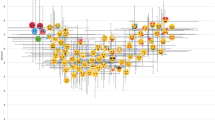Abstract
This study explores a method to obtain a comprehensive analysis of intrinsic emotions in emojis. A PAD Emotional State Model is ingeniously utilized in the analysis of emoji emotions semantics. 40 human-face emoji elaborately picked out as stimuli were presented to 8 subjects whose task was to rate each emoji in pleasure, arousal, dominance three dimensions. The rating data from all subjects shows a stunning low interrater agreement which indicates the unique emotion representation in the intrapsychic emotion space while the k-means clustering result reports a clear clustering graph composed of five independent emoji groups. This paper digitalizes different emotions binding with emoji into a three-dimension vector in the PAD space, which provides an emotion analysis model for the symbol and semantics research field. Focusing on the relationship between modulus of PAD vector and symbol feature, an important “squeeze effect” is found in this research, which deserves further study.
Access this chapter
Tax calculation will be finalised at checkout
Purchases are for personal use only
Similar content being viewed by others
References
Gülşen, T.T.: You Tell Me in Emojis. In: Ogata, T., Akimoto, T. (eds.) Computational and Cognitive Approaches to Narratology, pp. 354–375. IGI Global (2016). https://doi.org/10.4018/978-1-5225-0432-0.ch014
Jaeger, S.R., Ares, G.: Dominant meanings of facial emoji: Insights from Chinese consumers and comparison with meanings from internet resources. Food Qual. Prefer. 62, 275–283 (2017)
Jibril, T.A., Abdullah, M.H.: Relevance of emoticons in computer-mediated communication contexts: an overview. Asian Soc. Sci. 9, 201 (2013)
Walther, J.B., D’Addario, K.P.: The Impacts of emoticons on message interpretation in computer-mediated communication. Soc. Sci. Comput. Rev. 19, 324–347 (2001)
Kralj Novak, P., Smailović, J., Sluban, B., Mozetič, I.: Sentiment of Emojis. PLOS ONE 10, e0144296 (2015)
Fernandez-Gavilanes, M., Juncal-Martinez, J., Garcia-Mendez, S., Costa-Montenegro, E., Javier Gonzalez-Castano, F.: Creating & IT; emoji & IT; lexica from unsupervised sentiment analysis of their descriptions. Expert Syst. Appl. 103, 74–91 (2018)
Mehrabian, A.: Framework for a comprehensive description and measurement of emotional states. Genet. Soc. Gen. Psychol. Monogr. 121, 339–361 (1995)
Mehrabian, A.: Pleasure-arousal-dominance: a general framework for describing and measuring individual differences in temperament. Curr. Psychol. 14, 261–292 (1996)
Jaeger, S.R., Roigard, C.M., Jin, D., Vidal, L., Ares, G.: Valence, arousal and sentiment meanings of 33 facial emoji: Insights for the use of emoji in consumer research. Food Res. Int. 119, 895–907 (2019)
Riordan, M.A.: The communicative role of non-face emojis: affect and disambiguation. Comput. Hum. Behav. 76, 75–86 (2017)
Riordan, M.A.: Emojis as tools for emotion work: communicating affect in text messages. J. Lang. Soc. Psychol. 36, 549–567 (2017)
Acknowledgments
Technology Funds of Fundamental Research Strengthening Plan (No. 2020-JCJQ- JJ-263). National Natural Science Foundation of China (No. 71901061).
Author information
Authors and Affiliations
Corresponding author
Editor information
Editors and Affiliations
Rights and permissions
Copyright information
© 2021 The Author(s), under exclusive license to Springer Nature Switzerland AG
About this paper
Cite this paper
Tan, T., Xue, C., Wu, W. (2021). Digitalization of Emoji Emotions in the Pleasure-Arousal-Dominance Space. In: Rebelo, F. (eds) Advances in Ergonomics in Design. AHFE 2021. Lecture Notes in Networks and Systems, vol 261. Springer, Cham. https://doi.org/10.1007/978-3-030-79760-7_28
Download citation
DOI: https://doi.org/10.1007/978-3-030-79760-7_28
Published:
Publisher Name: Springer, Cham
Print ISBN: 978-3-030-79759-1
Online ISBN: 978-3-030-79760-7
eBook Packages: EngineeringEngineering (R0)




